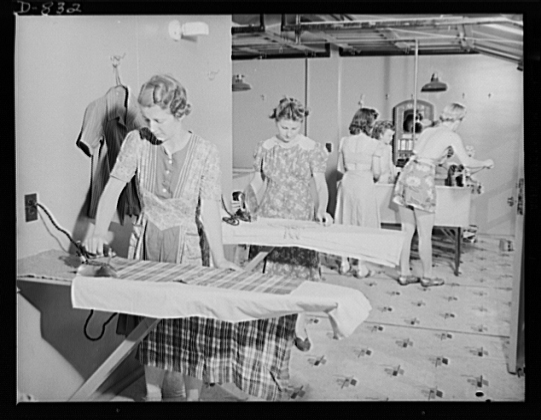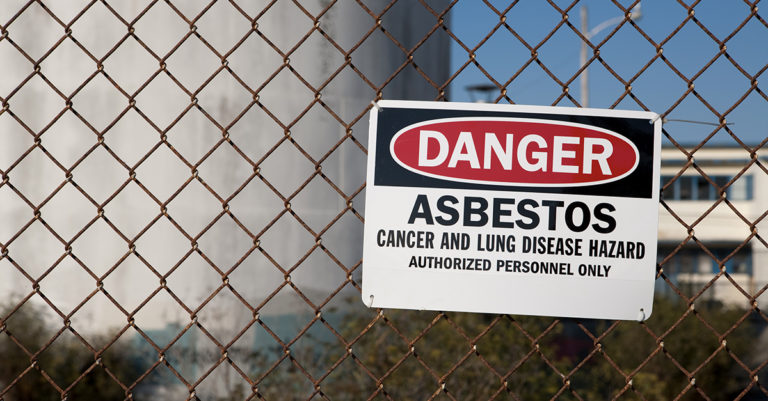
Mother’s Day is the perfect time to honor the mothers in our families and remind them how much they’re appreciated. These women typically shoulder the weight of caring for children, going to part- or full-time jobs, and managing the majority of household tasks like cleaning, doing laundry and cooking. They do a lot for us.
Recollecting on all they do for us makes us remember that even though women may not be the primary gender in occupations often exposed to asbestos, such as coal miners or pipefitters, some women’s domestic responsibilities can be tied to a topic that is receiving more attention in the mesothelioma community – the topic of take-home asbestos exposure. This exposure can be just as dangerous as asbestos exposure that happens on the job.
“Inhalation of asbestos resulting from living with and handling the clothing of workers directly exposed to asbestos has been established as a possible contributor to disease,” a report from the National Institutes of Health states.
Taking place primarily in the 1900s, take home exposure happened when asbestos fibers caused household contamination after they were brought into the home on husbands’ clothing or bodies. Domestic activities such as handling or laundering, most often conducted by the wife or mother in the household, resulted in dangerous asbestos exposure for the woman. Even as gender roles shifted throughout the 1900s, especially during World War I when more women began to work outside the home, women were still “celebrated for their quiet heroism in keeping the home intact whilst their men were absent” – meaning women were still the primary gender responsible for tasks like laundering asbestos-covered clothing.
Although we often hear more about the men who were diagnosed with mesothelioma, studies compiled by the National Institutes of Health show that clothes washing resulted in multiple cases of pleural mesothelioma, mostly among women. In the study, one mother of three daughters had no other asbestos contact besides laundering clothing for one to two years, 26 years prior to being diagnosed with pleural mesothelioma. Another woman whose pipefitter husband had asbestosis washed his dusty work clothes. Yet another was never occupationally exposed to asbestos, but her father was a lagger who wore his work overalls home.
No Safe Level of Asbestos Exposure – At Work and At Home
Mesothelioma and other asbestos-related diseases can be caused by very little exposure to asbestos. Handling dusty clothes – which is sure to distribute the fibers into the air to be inhaled – can be extremely dangerous. Preventing asbestos exposure doesn’t just mean warning workers in asbestos occupations, it involves the employer’s duty to warn the immediate family members of their risk as well.
In a 2012 trial, a majority of Illinois Supreme Court justices found that an employer has an obligation to warn workers and their families about the dangers linked to take-home asbestos exposure.
What can mothers and wives do to prevent domestic asbestos exposure?
- Be educated. Understanding the risk of bystander exposure, especially if a family member works in an industry or environment that could deposit asbestos fibers onto his/her clothing, shoes or equipment, is a must.
- Take precautions. Do whatever you need to do to avoid coming into contact with asbestos fibers. Ideally, your loved one should not be bringing contaminated materials into the home, since any type of handling can release the particles into the air.
- Seek a certified asbestos professional if you think you have asbestos in the home – whether on clothing, gear, equipment, or even common household building materials like floor tiles, decorative paint, insulation or drywall. Asbestos exposure can happen in a variety of ways, not just from washing contaminated clothing.
- Call us for a free consultation if you or a loved one has experienced domestic asbestos exposure and has been diagnosed with mesothelioma or another asbestos-related disease. Several of our clients have been women who were exposed to the toxic fibers when their husbands brought them home on clothing and other items.
Learn more about common occupations that could be linked to bystander asbestos exposure today.




